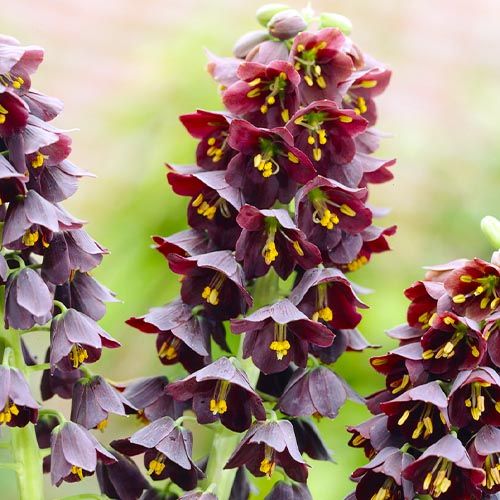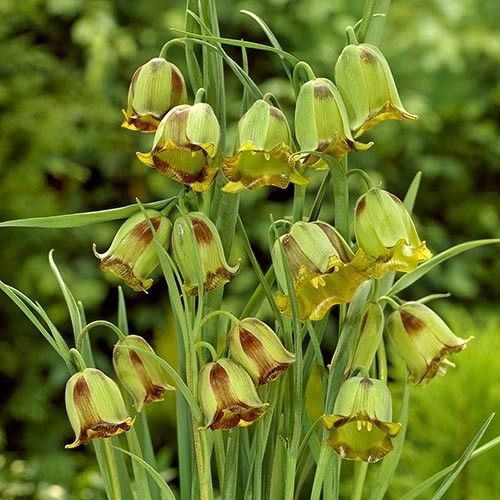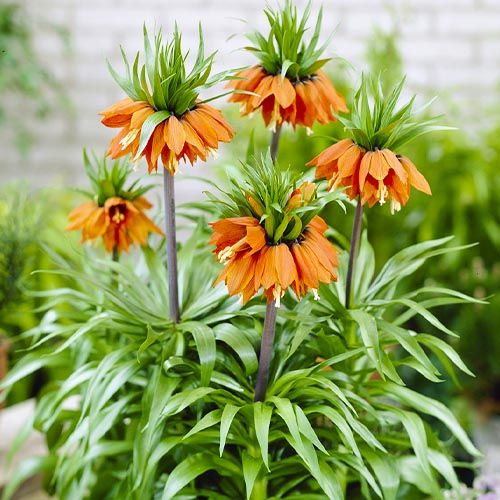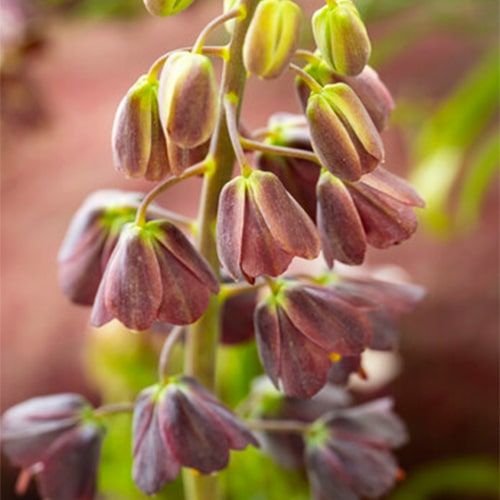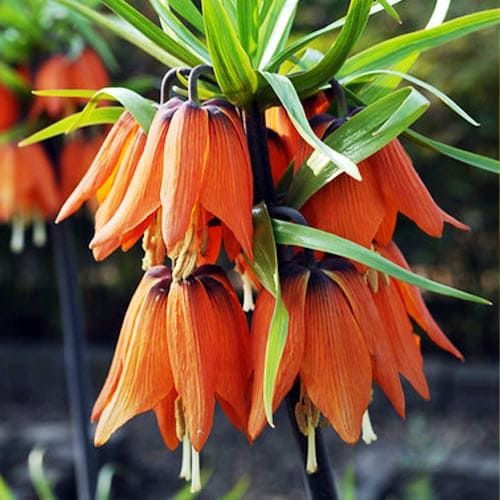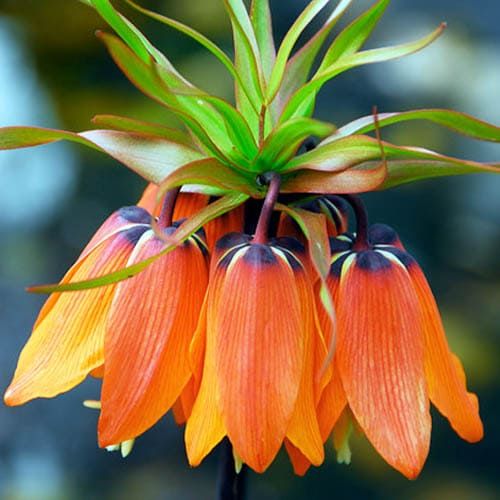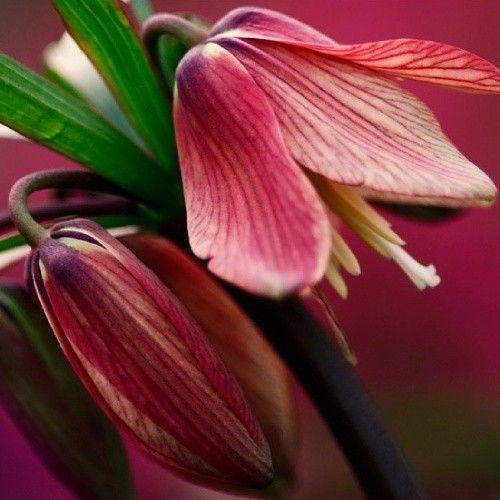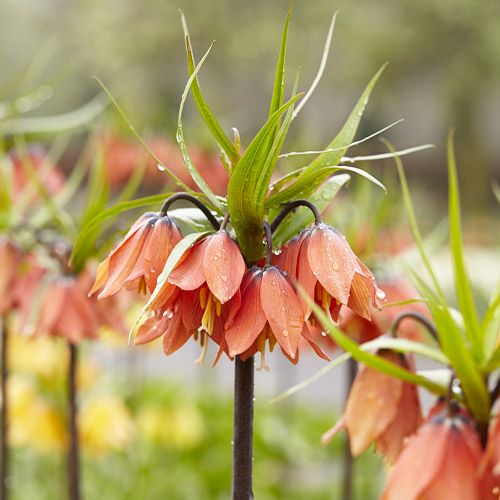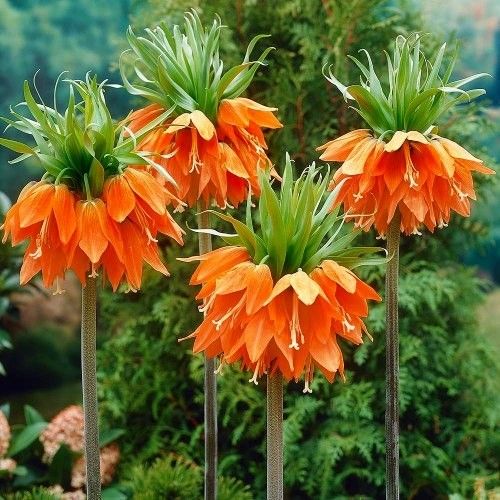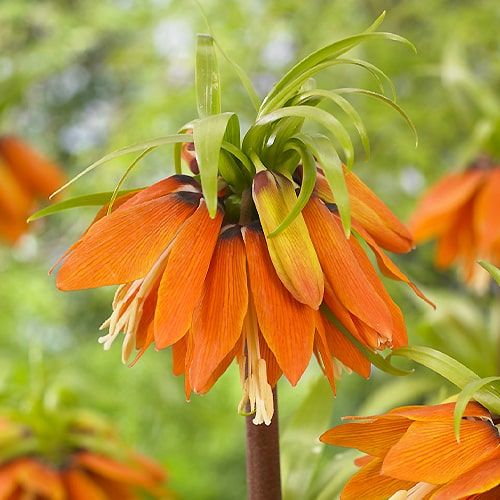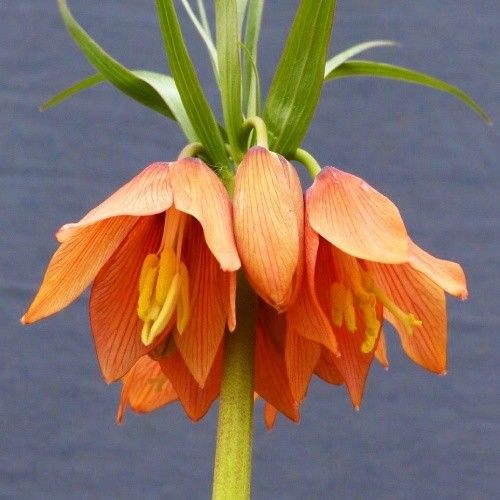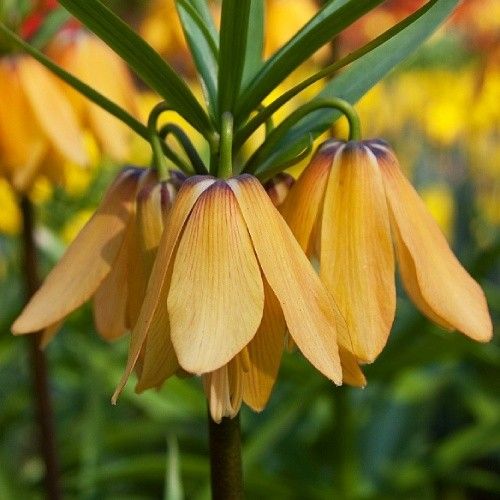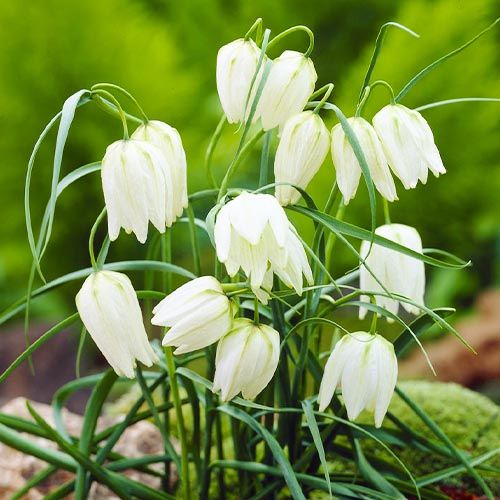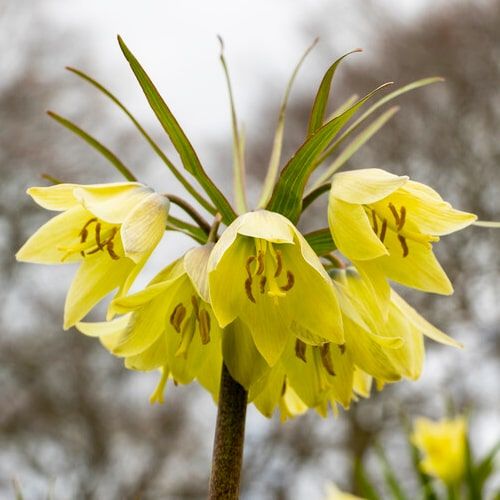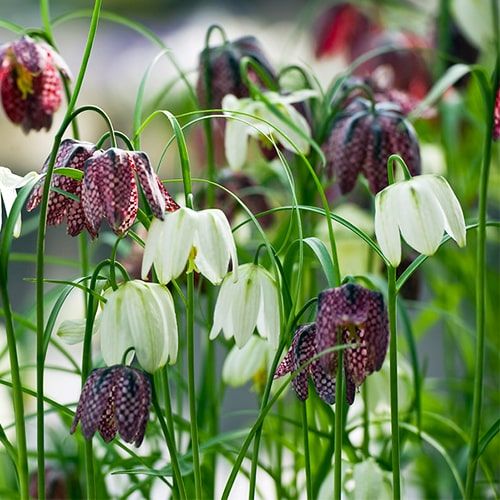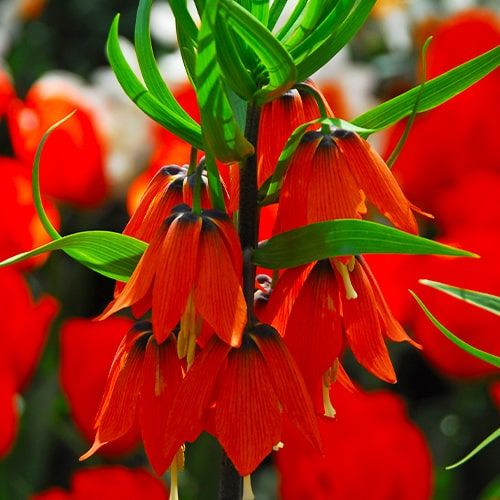
Fritillarias
FRITILLARIA🔥
Last Reviews
Fritillaria: Exquisite Beauties for Your Garden
Fritillaria, a genus within the lily family, encompasses a collection of exquisite plants renowned for their captivating and distinct floral displays. Native to the Northern Hemisphere, these remarkable flowers, boasting bell-shaped blooms, manifest in an array of colors and sizes. The allure of Fritillaria makes it an enticing selection for garden enthusiasts seeking to introduce distinctive and visually arresting flora into their gardens.
Fritillaria bulbs have gained popularity among gardeners due to their ease of cultivation and maintenance. They readily flourish with minimal effort, rewarding the gardener with resplendent blossoms that infuse elegance into any garden or indoor space.
The Allure of Fritillaria Flowers
The exceptional appeal of Fritillaria flowers lies in their unmistakable shape and distinctive checkerboard pattern. Exhibiting an elegant bell-like form, these blooms enchant with a captivating array of colors. From deep purples and rich burgundies to vibrant yellows and oranges, Fritillaria presents a diverse palette of hues. Renowned as a rare beauty, it possesses the innate ability to infuse any garden or interior space with a touch of class and timeless elegance.
Varieties of Fritillaria Bulbs
Fritillaria bulbs encompass a diverse array of varieties, each possessing its own unique characteristics. Among the popular fritillaria bulbs available for sale, notable options include the Crown Imperial, Snake`s Head, and the Checkered Lily.
- The Crown Imperial stands as the tallest of the fritillaria bulbs, gracefully reaching heights of up to 3 feet. This majestic variety boasts large and spectacular flowers, serving as a captivating focal point within any garden setting.
- The Snake`s Head fritillaria, on the other hand, features smaller bulbs that produce enchanting, nodding flowers. Resembling the heads of snakes, these blooms offer a distinctive and alluring addition to any garden landscape.
- Lastly, the Checkered Lily presents a bulb that yields small yet striking flowers adorned with an intricate checkered pattern. This variety imparts a touch of elegance and sophistication to both gardens and interior spaces.
With an assortment of fritillaria bulb varieties available, garden enthusiasts have the opportunity to select the ones that best suit their preferences and desired aesthetic.
Distinctive Features of Fritillaria Blooms
Fritillaria blooms possess an unmistakable and remarkable allure, courtesy of their distinct shape and captivating checkerboard pattern. The bell-shaped flowers stand out as a visual spectacle, designed to catch the eye and ignite curiosity. The beauty of fritillaria blooms is further enhanced by their stunning range of colors, spanning from deep purples and rich burgundies to vibrant yellows and oranges. These striking hues harmoniously blend with the unique shape, resulting in an exquisite display that adds an elegant touch to any garden or interior space. Prepare to be captivated by the enchanting presence of fritillaria blooms, as they lend an unparalleled grace to their surroundings.
Planting and Growing Fritillaria Bulbs
Fritillaria bulbs are highly favored among both novice and experienced gardeners due to their ease of cultivation and low-maintenance requirements. This makes them an excellent choice for individuals with varying levels of gardening expertise. Whether you are new to gardening or a seasoned enthusiast, you can confidently embark on the journey of growing and caring for fritillaria bulbs with relative ease. Their adaptability and straightforward care make them a delightful addition to any garden, providing a rewarding experience for all levels of gardening proficiency.
Choosing the Right Location
Selecting the appropriate location for planting fritillaria bulbs is crucial for their successful growth. These bulbs thrive in sunny locations that offer ample sunlight. Additionally, it is essential to ensure that the soil is well-draining to prevent waterlogged conditions that can harm the bulbs.
In areas with heavy clay soil, it is advisable to enhance the soil`s drainage capabilities by incorporating organic matter. This can be done by adding compost or well-rotted manure to the soil, which helps improve its structure and allows for better water drainage. By amending the soil with organic matter, you create a more favorable environment for the fritillaria bulbs, facilitating their healthy development and overall growth.
Preparing the Soil for Fritillaria Bulbs
Properly preparing the soil before planting fritillaria bulbs is indeed crucial for their optimal growth. These bulbs thrive in soil that is not only well-draining but also rich in nutrients. To prepare the soil adequately, consider incorporating compost or well-rotted manure into the planting area.
By adding compost or well-rotted manure, you enrich the soil with organic matter, which enhances its nutrient content and improves its overall structure. This creates a favorable environment for the fritillaria bulbs, providing them with the necessary nutrients and allowing for proper drainage. Such soil preparation sets the stage for healthy root development and robust growth of the fritillaria bulbs, ensuring their successful establishment in the garden.
Planting Techniques for Fritillaria Bulbs
When it comes to planting fritillaria bulbs, proper depth and spacing play a crucial role in their successful establishment. Follow these guidelines for optimal results:
1.Plant the bulbs with the pointed end facing upwards. This ensures that the emerging shoots will grow in the correct direction.
2.Place the bulbs at a depth of approximately 4 inches below the soil surface. This provides them with the necessary stability and protection.
3.Space the bulbs about 8 inches apart. Sufficient spacing allows each bulb to develop and expand without competition from neighboring plants.
After planting, give the bulbs a thorough watering to ensure they receive adequate moisture for healthy growth. Applying a layer of mulch over the planted area serves multiple purposes. It helps retain moisture in the soil, reducing the need for frequent watering, and acts as a natural barrier against weed growth, keeping the area around the fritillaria bulbs tidy and free from unwanted plants.
Caring for Fritillaria Bulbs
While fritillaria bulbs are generally low-maintenance plants, providing them with proper care is essential for their optimal growth and overall well-being. Consider the following care guidelines:
Watering and Mulching
To ensure the proper growth and development of fritillaria bulbs, regular watering is indeed necessary, particularly during the active growing season. It is crucial to keep the soil consistently moist, but it`s important to avoid waterlogging, as excessive moisture can lead to bulb rot.
Applying a layer of organic mulch around the fritillaria bulbs serves as a beneficial practice. Mulching helps retain soil moisture by reducing evaporation and slowing down the drying process. This creates a more favorable environment for the bulbs, ensuring they receive adequate hydration. Additionally, mulching acts as a natural barrier, inhibiting the growth of weeds around the fritillaria plants and reducing competition for nutrients and water.
By maintaining proper moisture levels through regular watering and using organic mulch, you provide the ideal growing conditions for fritillaria bulbs, promoting their health and vitality.
Managing Pests and Diseases
Indeed, fritillaria bulbs, like many other plants, can be vulnerable to pests and diseases. Slugs and snails are common culprits that may target fritillaria plants. To mitigate the impact of pests and maintain the health of your fritillaria bulbs, consider the following measures:
- Cleanliness and Hygiene: Keep the area surrounding the plants clean and free of debris. This reduces hiding places and potential habitats for pests, making your fritillaria less attractive to them.
- Handpicking: Regularly inspect the plants and manually remove any slugs or snails you encounter. This can be done by handpicking them off the foliage or using appropriate tools like tweezers or gloves.
- Organic Pest Control: If pest infestation becomes problematic, you may consider using organic pesticides as a last resort. Organic options such as copper barriers, diatomaceous earth, or iron phosphate-based baits can be effective against slugs and snails while minimizing harm to beneficial insects and the environment. Follow the instructions on the product labels and use them sparingly and judiciously.
It`s worth noting that maintaining overall plant health by providing optimal growing conditions, such as proper watering, adequate sunlight, and good soil fertility, can help fritillaria plants withstand pests and diseases more effectively. Regular monitoring and prompt action when necessary will help you keep your fritillaria bulbs healthy and thriving.
Dividing and Replanting
To avoid overcrowding, it is advisable to separate and replant Fritillaria bulbs every three to four years. The process involves delicately lifting the bulbs from the ground and separating the larger ones from the smaller ones. Ensure that the bulbs are replanted at the appropriate depth and adequately watered.
Design Ideas with Fritillaria
Fritillaria presents an exceptional option for garden enthusiasts seeking to introduce distinctive and captivating plants to their gardens.
Planting Fritillaria bulbs in clusters can produce a breathtaking burst of blooms, forming a remarkable spectacle. Alternatively, they can be planted in containers, bringing vibrant hues to your patio or balcony. By combining various fritillaria bulb varieties, you can fashion an unparalleled and visually striking exhibition of natural beauty.
Where to Buy Fritillaria Bulbs
Fritillaria bulbs are readily available for purchase at numerous garden centers and nurseries. Additionally, you have the convenience of acquiring them online from trustworthy sellers.
Conclusion: Elevate Your Garden with Fritillaria`s Elegant Presence
Fritillaria is an excellent choice for gardeners who are looking to add some unique and eye-catching plants to their garden. With their distinctive blooms and beautiful colors, fritillaria bulbs are sure to add an elegant touch to any garden. By following the tips in this article, you can plant and care for fritillaria bulbs and enjoy their beauty for years to come.
Don`t wait any longer, get your fritillaria bulbs today and elevate your garden with their exquisite presence!
Frequently asked questions about Spring Flowering Fritillarias
How do I plant Fritillaria?
Fritillaria prefer a sunny to semi-shady location with well-drained soil. Loosen the soil to a depth of about 20 cm and remove weeds and stones. Plant the Fritillaria bulbs at a depth that is about two to three times the size of the bulb. The top should point upwards. Make sure to leave enough space between the bulbs, usually about 10-15 cm. Carefully cover the bulbs with soil and press lightly to make good soil-to-bulb contact. Water the newly planted bulbs generously to moisten the soil.
When is the best time to plant Fritillaria?
The ideal time to plant Fritillaria bulbs is usually in autumn, around September to November. This gives the bulbs enough time to establish and root before spring. Autumn planting allows them to grow vigorously and flower in spring.
How long does it take for Fritillaria to flower?
The time it takes for Fritillaria to flower can vary depending on the variety. In general, however, it usually takes about 2 to 3 months after the bulbs have been planted in autumn until they show their characteristic flowers in spring.
How do you care for Fritillaria flowers properly?
Fritillaria needs regular watering during the growing season. Keep the soil evenly moist, but not too wet, as excess moisture can lead to rot. It is advisable to provide the plants with a balanced fertiliser during the growing season. Follow the instructions on the fertiliser pack to avoid over-fertilising. When the leaves wither in autumn, let them die back naturally. This allows the plant to draw nutrients back into the bulbs and prepare for the dormant period.
Where can I buy Danish Fritillaria flowers for cultivation?
Ordering from us is uncomplicated and convenient. With just a few clicks you can add the Fritillaria bulbs you want to your shopping basket and have them delivered to your home. We will make sure that your order is carefully packed and shipped promptly so that you can quickly enjoy your flowering glory.












